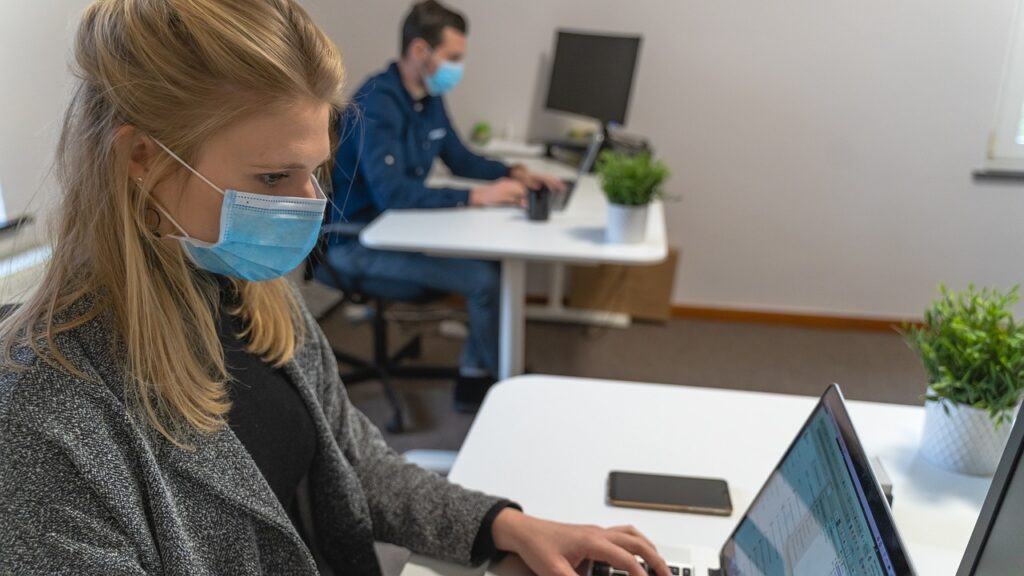The COVID-19 pandemic brought unprecedented challenges to global health systems, economies, and everyday life. COVID-19 testing centers emerged as critical pillars in the fight against the virus by identifying infections, curbing the spread, and providing valuable data for public health strategies. GS Labs delves into their significance, evolution, and impact during the pandemic.

The Role Of COVID-19 Testing Centers
Testing centers were established to detect COVID-19 cases swiftly and accurately. These centers helped isolate patients, trace contacts, and prevent further virus transmission by identifying infected individuals. The importance of widespread testing cannot be overstated—it enabled timely medical intervention, informed public health policies, and reassured communities.
Early Challenges And Rapid Response
In the early days of the pandemic, the demand for COVID-19 testing far outstripped supply. Health systems worldwide faced shortages of test kits, protective equipment, and trained personnel. Despite these challenges, governments, healthcare providers, and private organizations rapidly collaborated to establish testing centers.
Mobile testing units, drive-through facilities, and temporary testing sites were set up in parking lots, stadiums, and community centers. These innovative solutions made testing more accessible and reduced the risk of exposure in crowded hospitals and clinics. This response’s sheer speed and scale demonstrated the resilience and adaptability of public health systems.
Innovations In Testing Methods
Developing and deploying various COVID-19 testing methods were crucial in expanding testing capacity. Initially, Polymerase Chain Reaction (PCR) tests were the gold standard due to their high accuracy. However, they required specialized equipment and trained personnel, leading to longer turnaround times.
To address these limitations, rapid antigen tests were introduced. Although slightly less accurate than PCR tests, they provided results within minutes and were ideal for mass screening and point-of-care testing. Saliva tests and at-home test kits further increased accessibility and convenience, allowing more people to get tested regularly.
Community Engagement And Education
COVID-19 testing centers became more than just places for diagnosis; they evolved into hubs for community engagement and education. Public health officials and volunteers used these centers to distribute information about the virus, preventive measures, and available resources. Educational campaigns helped dispel myths and misinformation, fostering a better understanding of COVID-19 and the importance of testing.
By directly engaging with communities, testing centers built trust and encouraged participation in testing programs. This grassroots approach was particularly effective in reaching vulnerable and underserved populations, ensuring that no one was left behind in the fight against the pandemic.
Data Collection And Public Health Strategies
COVID-19 testing centers were pivotal in collecting data that informed public health strategies. The data gathered from testing sites provided insights into infection rates, transmission patterns, and the effectiveness of interventions. Real-time data analysis enabled health authorities to identify hotspots, allocate resources efficiently, and implement targeted measures such as lockdowns, travel restrictions, and vaccination drives.
The transparency and availability of testing data also empowered individuals to make informed decisions about their health and safety. Online dashboards, mobile apps, and public health announcements kept communities updated on the latest developments, fostering a sense of collective responsibility and vigilance.
Supporting Healthcare Systems
Testing centers alleviated the burden on healthcare systems by diverting potential COVID-19 cases away from hospitals and clinics. This allowed hospitals to focus on treating severe cases and managing other essential medical services. Furthermore, early detection through testing helped reduce the severity of outbreaks, ultimately saving lives and preserving healthcare resources.
Testing centers also supported contact tracing efforts, which were essential in breaking the chain of transmission. Identifying and isolating close contacts of infected individuals prevented further spread and helped control localized outbreaks.
The Human Element: Healthcare Workers And Volunteers
The success of COVID-19 testing centers would not have been possible without healthcare workers and volunteers’ dedication and hard work. These individuals put themselves at risk to serve their communities, often working long hours in challenging conditions. Their commitment and compassion were a source of inspiration and hope during dark times.
Healthcare workers conducted tests, provided counseling, and offered support to anxious individuals. Volunteers assisted with logistics, crowd management, and outreach efforts. Together, they ensured that testing centers operated smoothly and effectively, embodying the spirit of solidarity and resilience.
Lessons Learned And Future Preparedness
The experience of operating COVID-19 testing centers has provided valuable lessons for future public health emergencies. The importance of quick mobilization, collaboration across sectors, and community engagement cannot be overstated. Investments in healthcare infrastructure, technology, and workforce training will enhance preparedness and response capabilities.
Moreover, the innovations and practices developed during the pandemic—such as rapid testing methods, mobile units, and data analytics—can be adapted for other infectious diseases and health challenges. The legacy of COVID-19 testing centers will continue to shape public health strategies and improve global health resilience.
Conclusion
The deployment of various COVID-19 testing methods was crucial in expanding testing capacity, with PCR tests as the gold standard and rapid antigen tests offering quicker results for mass screening. Testing centers provided diagnostics and served as community engagement and education hubs, building trust and ensuring no one was left behind. The dedication of healthcare workers and volunteers was essential to the success of testing centers, offering hope and stability during the pandemic while informing future public health strategies.